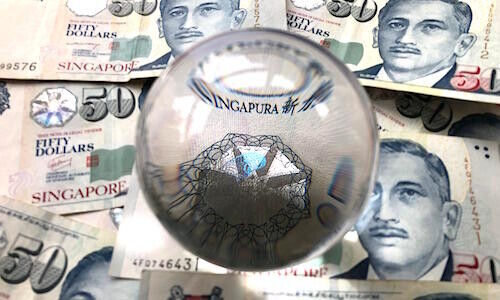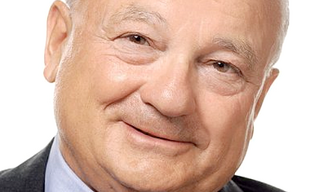Julius Baer: Is SGD «Asia’s Answer to the Swiss Franc»?
US dollar weakening is leading investors to reconsider their overall currency exposure. For Asia, Julius Baer explores the viability of the Singapore dollar as an alternative safe haven option, similar to the Swiss franc.
The weakening of the US dollar in recent times has led to increasing interest in currency diversification, especially for investors whose core wealth and spending are denominated in a stronger currency. Year-to-date, the DXY – an index that measures the value of the greenback relative to a basket of foreign currencies – has fallen around 10 percent.
While the Swiss franc is often seen as an alternative safe haven, Julius Baer reviews the viability of the Singapore dollar as another option in Asia, noting its earned reputation for being one of the safest and most stable currencies in the region.
«This is backed by a 25-year track record of appreciation averaging 1.55 percent per annum, which in turn is underpinned by a unique managed float of the currency, firm economic growth, strict fiscal discipline and Singapore’s rise as a global hub for services,» said Jen-Ai Chua, Julius Baer’s equity research analyst, in a report entitled «Singapore dollar primer: Asia's answer to the Swiss franc?».
Strength Through Stability and Crisis
According to the report, the Singapore dollar, alongside the Swiss franc, is the only major currency to have delivered positive returns against the US dollar on a 10, 20 and 30-year basis. Within Asia, it is the best performing currency, rising 29.3 percent against the dollar since 2000.
This relative strength also applies during turbulent periods, having corrected just 15 percent during the 1997-1998 Asian Financial Crisis, compared to a 30 percent decrease of the Thai baht and Korean won as well as a 70 percent collapse of the Indonesian rupiah. The Singapore dollar strengthened during the 2008 Global Financial Crisis while other regional currencies fell and held steady in the latest Covid pandemic.
The bank notes that the city-state’s currency, despite being fiat money, is fully backed by gold, silver and other foreign assets held by the Monetary Authority of Singapore (MAS), as required under the Currency Act.
Unique Monetary Policy
Julius Baer also touted Singapore as being «one of the few, if not the only, country in the world which operates a monetary policy regime based on a managed float of its currency,» with the MAS not controlling domestic interest rates or money supply growth.
Through an intermediate strategy known as the BBC (Basket, Band and Crawl) system, the Singapore dollar is managed against a basket of bilateral exchange rates combined into an index known as the Singapore dollar nominal exchange rate (S$NEER). It is allowed to float within an undisclosed policy band and a guided path aimed at achieving low and stable inflation.
«The past 25 years has correlated with a period of remarkable stability for the Singapore dollar,» Chua underlined. «While it is not uncommon to see peak-to-trough/trough-to-peak moves of 40-50 percent in major Asian currencies like the Australian dollar, Japanese yen and Korean won, especially during periods of global shocks, such volatility is virtually non-existent in the case of the Singapore dollar.»
FX Projection
Moving forward, Julius Baer expects the Singapore dollar to continue strengthening against the greenback with forecasts of SGD1.28/USD on a 3-month basis and SGD1.25/USD on a 6-month basis.
«Over the longer term, weakness in the US dollar should continue to undergird Singapore dollar strength,» Chua said.
Gaining Exposure
For investors interested in gaining exposure, Julius Baer suggests considering Singapore dollar bonds for quality and stability. For those with a greater risk appetite, the bank is upgrading its rating for Singapore equities from neutral to overweight with a preference for high dividend yielding mid-cap stocks.
«While there is arguably still some way to go before the Singapore dollar can claim to be a global safe haven the same way the Swiss franc is – due to its relatively short trading history and some say, the managed nature of the currency which limits market speculation, large scale positioning, and by implication, liquidity and depth – it is nevertheless recognized as one of the world’s major currencies,» Chua added.



























